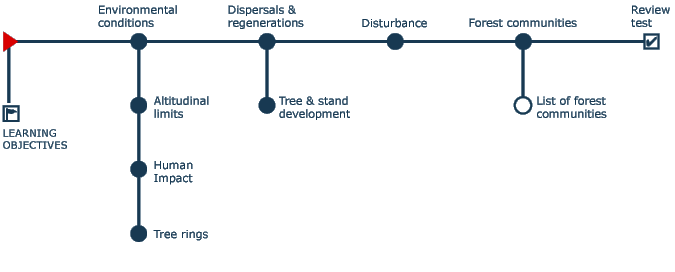 |
|
|
|
|
| Burga, Holzhauser |
|
The subalpine (subalpine means: forest tundra ecotone) zone is characterized by severe environmental conditions (large temperature fluctuations, high radiation, snow and ice, dry atmosphere, short growing period, poor soils, shallow substrate, denudation). Subalpine coniferous forests and trees are well adapted on this environment (altitudinal zonation, forest and tree limit). In the Swiss Alps, c. 14 dominant upper montane and subalpine forest communities of coniferous tree species can be distinguished. Trees are indicators of environmental conditions and their growth is determined by several external influences. The harsh conditions within the short vegetation period at the alpine upper forest limit during the lifetime of a tree are reflected both in the shape of the tree and in its tree rings. An extensive set of viable seeds and their far-ranging dispersal by wind or animals to safe growing sites are prerequisites for tree and forest regeneration. The seeds successfully gemlinate and establish as seedlings, when their microenvironment and -climate is suitable, and disturbance by pathogen is absent. Both the set of viable seeds and successful germination vary considerably between years, which restrain and decelerate regeneration of subalpine forests.In subalpine forests, disturbance by natural hazards such as avalanches or rockfall playa decisive role for forest dynamics and occurrence. Alpine forests and most other mountain forests of the world have been exploited since Middle Ages or earlier (clearcutting, grazing, alpine pastures); this has led to a marked lowering of the forest limit of several hundreds metres. |
 |
29 August 2011 |
||
| |
||